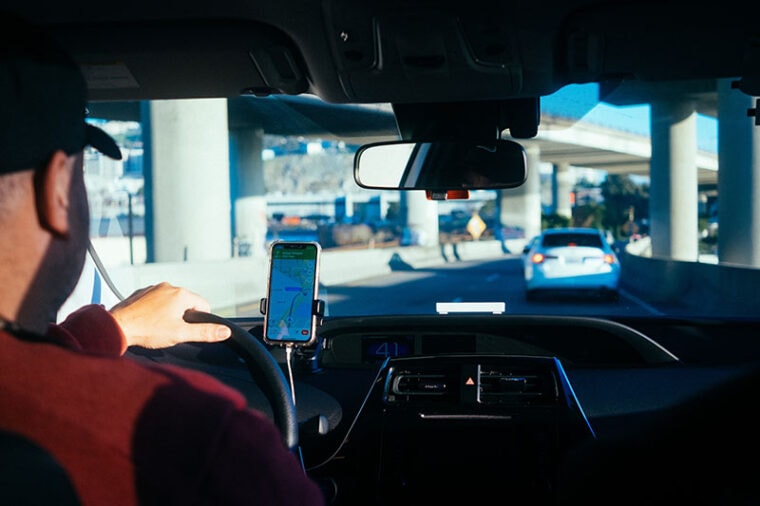
Life doesn’t stop just because your car does. When you need to get around without your normal ride, services like Uber and Lyft have made it easier than ever to overcome catastrophes. But relying on someone else puts you at their mercy, and you can’t always treat their car as you would your own.
That could be problematic if you’re bringing cats along. While you may allow all pets in your car at all times, Lyft operators can decide whether to let cats in their vehicles on a case-by-case basis.
With no guarantees from your driver, you could be in a bind when you’re rushing to make a vet appointment. To help you avoid a stressful situation, we’ll explore when Lyft allows cats and what you can do to ensure you and your pet can catch a ride.
Does Lyft Allow Cats?
Lyft does not have a company policy on non-service animals. Instead, drivers decide, with each ride, whether they will allow cats in their vehicles. Some accept cats and any other pet, while others only allow certain animals or none at all. Drivers can also reject animals based on various criteria, such as misbehavior or missing restraints.
The exception is service animals. The Americans with Disabilities Act (ADA) allows service animals in any public area, including cabs. By law, Lyft drivers must accept service dogs at all times, regardless of any religious, cultural, or health reason for generally not allowing animals. Service animals are critical aids for disabled individuals, helping them overcome severe impairments or protecting them from harm, so they must always have equal access.

Can Cats Be Service Animals?
Cats can be excellent emotional support or therapy animals but cannot become service animals. Per the ADA, the only recognized service animals are dogs and miniature horses with the necessary training to aid their handler.
A service animal performs particular tasks for an individual, from detecting food allergens to activating a medical alert button during an emergency. Others fill in gaps in abilities, such as seeing-eye or signal dogs. Reliability and trainability are critical in a role that could potentially save a life. Lovable as they are, cats cannot dependably learn the tasks that would qualify them as service animals.
Emotional support and therapy animals do not follow the same exceptions as service animals. Although beneficial in many ways, they aren’t necessary or trained to help individuals stay safe or function under particular circumstances. As such, no situation would legally require a Lyft driver to allow your cat on board.
What To Do If You Need a Lyft With a Cat
After ordering your ride, contact the Lyft driver immediately to explain your situation. Tell them about your cat, its size and temperament, and restraints.
If the driver declines the pet or shows any uncertainty in allowing it, cancel your ride and get someone else. Lyft charges a $5–$10 cancellation fee after you have a driver assigned to you but will waive it if you contact them.
Lyft may charge a damage fee if your driver’s vehicle needs extensive cleaning after a trip with your cat. Typical fees are $20, $30, $80, and $150, with tiers based on the level of damage and subsequent cleaning effort. Minor damage, like a few muddy pawprints or some shed fur, will incur lower-end fees. But if your cat is bleeding or vomiting all over the seats, a vet bill won’t be the only major expense to expect that day.
Do Uber and Lyft Treat Cats the Same Way?
They may offer similar services in similar places, but there are nuanced differences in how Uber and Lyft allow cats. Both supply value in unique ways.
Lyft’s service doesn’t include added charges if you bring a pet, but there is no way to guarantee that your assignment will allow pets. It’s a gamble and may require more work and time on your part, but it’s free.
Uber adds ease and assurance by offering an Uber Pet option, a togglable selection you can make while ordering a ride. A small fee applies, usually $3–$6 extra, and you can only guarantee one dog or cat.
The service is not available everywhere. If not, you may be able to go around the issue by ordering an UberX and discussing your pet with the driver before they arrive. It costs a few extra dollars and comes with stipulations, but booking with Uber Pet means a lower likelihood of a hiccup when your ride arrives.

Tips for Catching a Lyft with a Cat
Book a Lyft, contact the driver about your cat, and make new arrangements if they don’t allow them. It’s simple enough (if not quick) to get a Lyft with your cat. But you’re not in the clear once someone accepts the job. Drivers can still reject cats before or during the ride and charge extra fees when your cat makes a mess.
Always follow your driver’s directions to ensure a successful ride without extra fees. They may make special requests, such as using a carrier, before allowing them. No matter how lenient your driver may be, keeping your cat calm and restrained is always a wise idea to ensure they stay in your control. Ensure your cat has a collar with up-to-date information to make them easier to find if they escape while entering or exiting the vehicle.
Conclusion
Animal adoptions have reached new peaks in recent years, bringing more importance to accommodating people and their pets. Lyft is one of the many service companies nationwide trying to be more inclusive of every family member, whether they walk on two legs or four. There’s no guarantee that every ride will allow your cat. But by following these insights, you’ll avoid any unnecessary and unwanted surprises on your next trip.
Featured Image Credit: Paul Hanaoka, Unsplash






